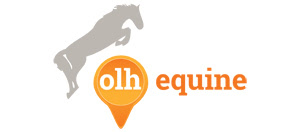By Bruce Campion-SmithOttawa BureauWed., March 18, 2020
What’s more extraordinary is that Wednesday’s measures are just the start of Ottawa’s months-long efforts to shore up Canada’s economy and support its workers in the face of an unprecedented economic disruption.
Finance Minister Bill Morneau has told business leaders that it will take two, perhaps three rounds of targeted spending by the federal government to see the economy through the health crisis and put it back on the road to prosperity.
While the prime minister had billed Wednesday’s initiative as a “significant” stimulus package, the focus was less on stimulus than simple crisis management, with targeted measures help individuals and businesses facing an immediate cash crunch.
“Right now, we are focused on making sure that people who are not getting income or revenue because of this COVID-19 challenge have the money to be able to pay for groceries, to pay their rent, to support their families through this difficult time,” Trudeau said.
Much of the government’s assistance to individuals will come through two emergency funds, aimed mainly at helping those who don’t qualify for Employment Insurance (EI).
The Emergency Care Benefit of up to $900 bi-weekly for up to 15 weeks will provide income support to those who must stay home and do not have access to paid sick leave. This includes workers, including self-employed, who are sick, quarantined or have been directed to self-isolate. Working parents who have to stay home without pay to look after children would also qualify.
An Emergency Support Benefit from the Canada Revenue Agency will provide support to workers who are not eligible for EI and who are facing unemployment.
Payments will begin to flow in April and will be retroactive to Mar. 15, Morneau’s office said.
There will also be a six-month, interest-free moratorium on payments to the Canada Student Loan Program; a special top-up payment for the Goods and Service Tax credit to assist low-income families; and a temporary hike to payments under the Canada Child Benefit.
On the business front, the government is offering a wage subsidy for the next 90 days for small businesses that keep employees on the payroll. But the amount, just 10 per cent to a maximum of $1,375 per employee and $25,000 per employer, has sparked warnings from one advocacy group that it’s not enough to save jobs.
“I’m not sure it’s going to go very far in actually saving a lot of the jobs, keeping employees with their employer in some of those really hard-hit industries,” said Corinne Pohlmann, senior vice-president of national affairs at the Canadian Federation of Independent Business.
“Labour is by far one of the biggest expenses for small business. When they find themselves in a cash crunch, that’s sometimes the only thing they can do,” Pohlmann said in an interview.
The group is urging the government to boost the wage subsidy, she said.
COVID-19 relief measures: For People
Here are key components of the government’s massive stimulus package as they apply for individuals, families and children.
Children
$10 billion in funds for Emergency Child Care Benefit up to $900 bi-weekly for up to 15 weeks.
Families
$5.5 billion in funds into the economy after special top-up payment under the Goods and Services Tax (GST) credit.
Workers
$5 billion in funds toward Emergency Support Benefit for workers who are not eligible for EI and face unemployment
Parents
$2 billion in funds toward Canada Child Benefit payments.
Taxes
Extend the tax filing deadline for individuals to June 1, and allow all tax payers to defer payment until after August 31.
Wages
Provide eligible small businesses a 10 per cent wage subsidy for the next 0- days, up to a maximum of $1,375 per employee and $25,000 per employer.
Mortgages
Provide increased flexibility to lenders to defer mortgage payments on homeowner government-insured mortgage loans to borrowers.
EI
Waive mandatory one-week waiting period for EI sickness benefits. Waive requirement for medical certificate to access EI sickness benefits.
In addition to $27 billion of direct support, the government also announced Wednesday that it was providing $55 billion of tax deferrals to companies and households. The tax filing deadline for individuals will be extended to June 1 and have until Aug. 31 to pay any outstanding tax bills without penalty. Businesses will also be able to defer tax payments.
The government will recall the House of Commons, which was suspended because of COVID-19, for a brief sitting next week with the minimum number of MPs needed to pass legislation for the economic measures.
Both business and labour groups agreed that Wednesday’s measures are just the start.
“Other phases will likely have to be taken into consideration as they learn more but equally but where does the crisis proceed,” said Hassan Yussuff, president of the Canadian Labour Congress.
“We’re going to have to do far more if the crisis continues.”
COVID-19 relief measures: For Business
Here are key components of the government’s massive stimulus package as they apply for businesses.
Income tax
All businesses to defer the payment of income tax amounts until after August 31, 2020.
Credit
Increase credit available to small, medium and large Canadian businesses.
Support
Further expand Export Development Canada’s ability to provide support to domestic businesses.
Mortgages
Launch an Insured Purchase Program to purchases up to $50 billion of insured mortgage pools through the Canada Mortgage and Housing Corporation (CMHC).
Flexibility
Provide flexibility on the Canada Account limit, allowing the government to provide additional support to Canadian businesses.
Credit
Augment credit available to farmers and the agri-food sector through Farm Credit Canada.
Perrin Beatty, president and CEO of the Canadian Chamber of Commerce, said Wednesday’s measures were “encouraging” and showed that the federal government comprehends the urgency of the economic threat.
But he said policy-makers and businesses are in uncharted waters with a crisis that bears no resemblance to previous economic shocks.
“It’s going to require a lot of adjustment on all of our parts … All of us are improvising and flying by the seat of our pants to some extent,” Beatty said.
He said Morneau has acknowledged to him that two or three rounds of economic stimulus could be required.
“What’s being done today is how do we ensure that businesses stay open and people can keep a roof over their head and they can afford the essentials. The focus at this point is very much in the short-term,” Beatty said.
Indeed, Morneau made clear Wednesday that nursing the economy through this crisis will be a marathon, not a sprint, with the challenge made harder by the fact that no one knows when the threat of COVID-19 will subside.
“At this stage the full breadth and the scope of the impact remain unknown … This is a challenge like none we’ve ever faced before,” Morneau said.
“Our government is prepared to do whatever it takes to keep the economy strong and stable. Whatever it takes.”RELATED STORIES
Canada unveils massive $82 billion stimulus package to combat coronavirus
Wednesday’s plan, he said, was just the “first step.”
“When the time is right, we will announce more long-term investments to assist with recovery and help Canadians get back to their daily lives,” Morneau said, adding that the immediate focus was using “all of the tools we have to stabilize our economy.”
He acknowledged that his responsibility to keep the federal finances on a steady fiscal track, with a declining debt-to-GDP ratio, was now out the window.
“Right now, as minister of finance, my only job is to make sure that Canadians can keep food in the fridge, that they can keep a roof over their heads,” he said.
Indeed, the finance minister offered no new projection of the deficit, previously forecast to be $28.1 billion in 2020-21, or the revised debt-to-GDP ratio, now around 31 per cent.
Morneau appeared at Wednesday’s news conference with Bank of Canada Gov. Stephen Poloz, who highlighted the bank’s efforts to ensure credit is available for banks and businesses.
He said the bank is “ready to provide all the liquidity the financial system needs” and has even fashioned a measure to help individual banks that face “sudden stress.”
The bank has cut its key lending rate twice this month by a total of 100 basis. He suggested that the bank wanted to take some time to see the impact of its already announced cuts and the effects of Wednesday’s fiscal measures before deciding whether another rate cut was warranted.Bruce Campion-Smith is an Ottawa-based reporter covering national politics. Follow him on Twitter: @yowflier











